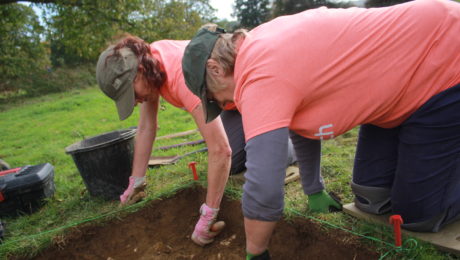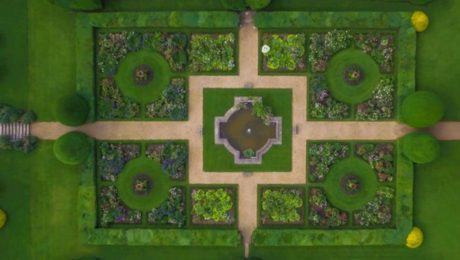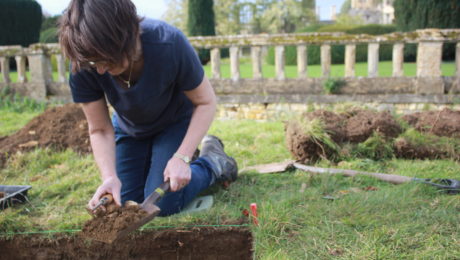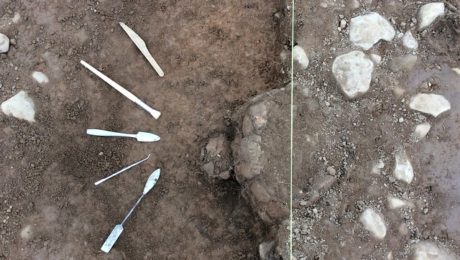This whole excavation began thanks to Sudeley Castle’s Head Gardener, Stephen Torrode. He’d noticed that one of the large, untamed fields to the side of the castle, was filled with strange lumps and bumps. Out of curiosity, he decided to investigate, and got a geophysical survey done. The results were astonishing!
In the 19th century, Emma Dent had found several pieces of Elizabethan masonry in the middle of the field and now geophysics clearly revealed the geometrical outline of an original Tudor garden right under his feet.
Despite their reputation as being elaborate and extravagant, hardly any Tudor gardens actually survive. Most were destroyed during the 18th and 19th centuries, when a popular landscaping craze swept the country.
While some have been reconstructed based on historical evidence, this ‘ghost garden’ at Sudeley Castle is one of perhaps only two in the entire country where the original paths still appear to be in place, making this one of England’s last true surviving Tudor gardens.
Bringing it back to the surface would be an amazing achievement, giving us the chance to find out what it would have been like in the days when Anne Boleyn, Elizabeth I and Katherine Parr walked its paths. But that’s not all…
Historical records indicate that in the summer of 1592, Elizabeth and her retinue arrived at Sudeley Castle. It was the eve of the fourth anniversary of her victory over the Spanish Armada and she was clearly in the mood to celebrate; the ensuing party continued for three whole days, and nearly bankrupted her host.
In October 2018, when DigVentures was called in to examine a mysterious grassy hump in the castle grounds and carry out a preliminary investigation, we soon realised that we were looking at a substantial platform, just like those on which a banqueting house, or a viewing platform, would be constructed. Experts from Sudeley Castle now believe that this grassy mound is where Elizabeth’s epic celebration took place.
Historians are increasingly beginning to recognise the importance of royal tents in Tudor England. Not only were they often enormous and elaborate undertakings that took weeks to build, they were also vital to a proper understanding of Tudor politics, in which a mobile court that could indulge in elaborate displays of wealth and magnificence all over the country were fundamental.
This discovery at Sudeley Castle gives us a rare opportunity to uncover the physical remains of one such structure, and to learn more about the role of royal tents in the Tudor period.





